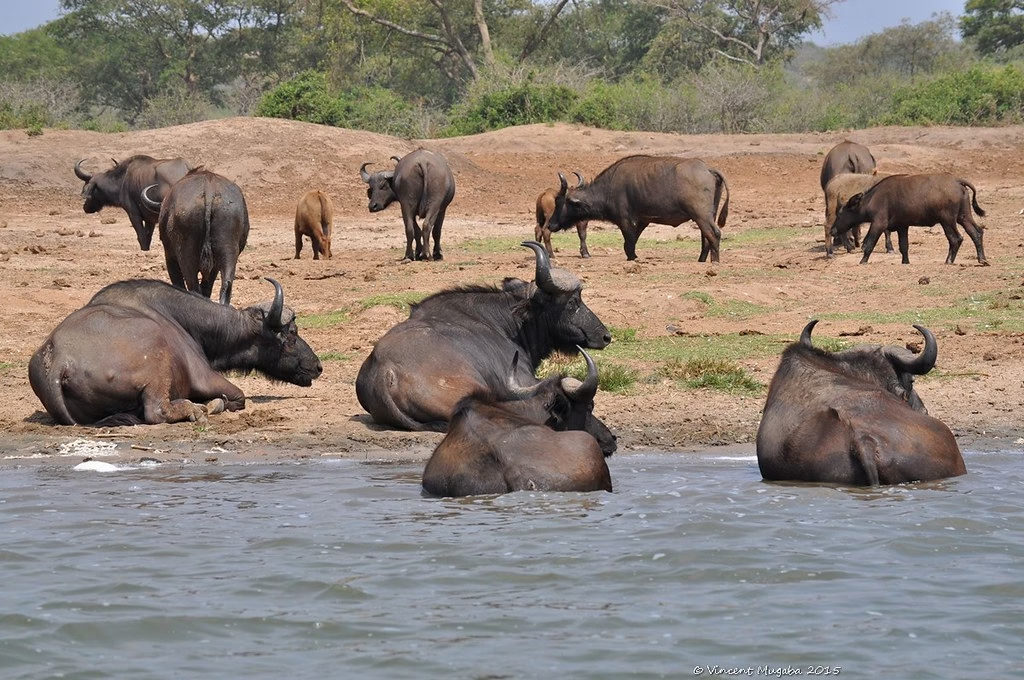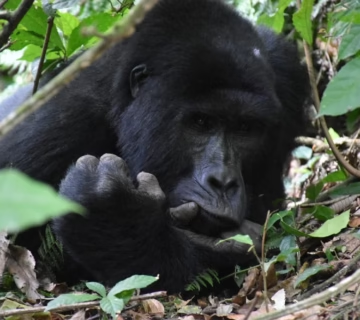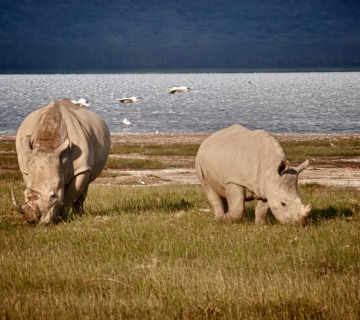Queen Elizabeth National Park Safari
Worlds most bio diverse protected area in East Africa and maybe Africa at large will be revealed to you by Queen Elizabeth National Park Safari / Uganda safaris. From the scattered volcanic foothills of the well-known mountains of the moon or mountain rwenzori in the north, the renowned Queen Elizabeth National Park spans Perhaps the reason for the great diversity of species ranging from birds, mammals to playful primates is Queen Elizabeth National Park runs along the beaches of Lake Edward to ishasha in the south covering a variety of natural environments.
Unlike other national parks, Queen Elizabeth’s safaris are stand-alone packages with several tourist activities to make your trip sufficiently fulfilling. This is so conceivable since Queen Elizabeth National Park is naturally blessed with a great variety of specially chosen mammals (approximately 95 species), bird species, primates, reptiles among others. Except for the white rhino, buffaloes, elephants, hippos, lions and camouflage leopards, Queen Elizabeth national park is the perfect place for your chance to meet the “big five” attractions of Africa.
Park Safari for Queen Elizabeth National Park
The wild ecosystems of Queen Elizabeth’s national park directly help to support the variety of species found there. About 1978 sq.km, Queen Elizabeth National Park is spread over a large area with several natural habitats including medium altitude moist deciduous forest, moist thicket riparian forest, riverine bush land, open savanna grasslands, savannah woodland, seasonal and permanent swamps, lakes and rivers plus kazinga channel linking lake Edward to lake George.
Among other primates including black and white colobus monkeys, red tailed monkeys, and the blue colobus monkeys, the woodlands are ideal for the famed habituated chimpanzees in Kyambura Gorge, as well as for the monkeys. The amazing nature treks and the cavernues including the amazing bat cave and nyan zibiri historical caves make Maramagambo forest equally well-known.
The marshes of Lake George, Lake Edward, and the kazinga channel provide home for a somewhat diverse range of species; in fact, Queen Elizabeth national park is visible during the well-known kazinga launch cruise. Other unusual species, waterbucks, the threatened shoebill stork, and the unusual statunga antelope call the marshes home. Known as a birdwatching location, Kazinga waterway is also a gazette ramsar site maintained by the International Union for the Conservation of Nature (IUNC). Among the birders’ interests are several species of birds found around kazinga canal, such the king fishers, cormorants, falcons, and African fish eagle.
Big animals including buffaloes, elephants, and the lion king himself calls the large savannah region home. Over 200,000 buffaloes, 10,000 hippos, more than 1000 elephants, and perhaps 200,000 lions abound in Queen Elizabeth national park. For your lion study, Kasenyi plains is the perfect location and also a renowned habitat for Uganda kobs. On the other hand, ishasha sector is common in safari news because of the presence of the special tree climbing lions among others.
Another great aspect of Queen Elizabeth National Park is accommodation, which will help you to trust in the purity of your safari trip to the Wild West. From the very luxury and extravagant lodges to the unique budget lodging and standard camps and the medium range bandas, many of the housing facilities in practically every sector and portion of Queen Elizabeth national park are spread. From the tour companies, you can reserve any lodging of your preference as they simplify your work and make your safari a customized concrete experience in every beat and touch.
Facilities for Accommodation Within Queen Elizabeth National Park
The base of all operation carried out in the northern section of Queen Elizabeth national park is mweya peninsula, where the park headquarters are situated. Furthermore, the easily accessible road network makes park mobility quite cheap; highways link several locations of importance, including Ishasha for the tree climbing lions, Ishasha camp, and the ranger station in southern Queen Elizabeth national park.
Although the Queen Elizabeth national park is available all year long, the dry season—December to February—is the ideal one. The dry season is the busiest time for tourists to Queen Elizabeth National Park; the roads are passable and there is no likely rain interruption; moreover, the animals are readily seen around the water sources in the dry season. Though the dry season is nice, the wet season ranks among the most beautiful seasons. The real natures beauty is seen among the green savannah meadows and lush trees and blossoming flowers during the wet season. Thus, Queen Elizabeth national park is a great place to arrange your safari any time of year.



